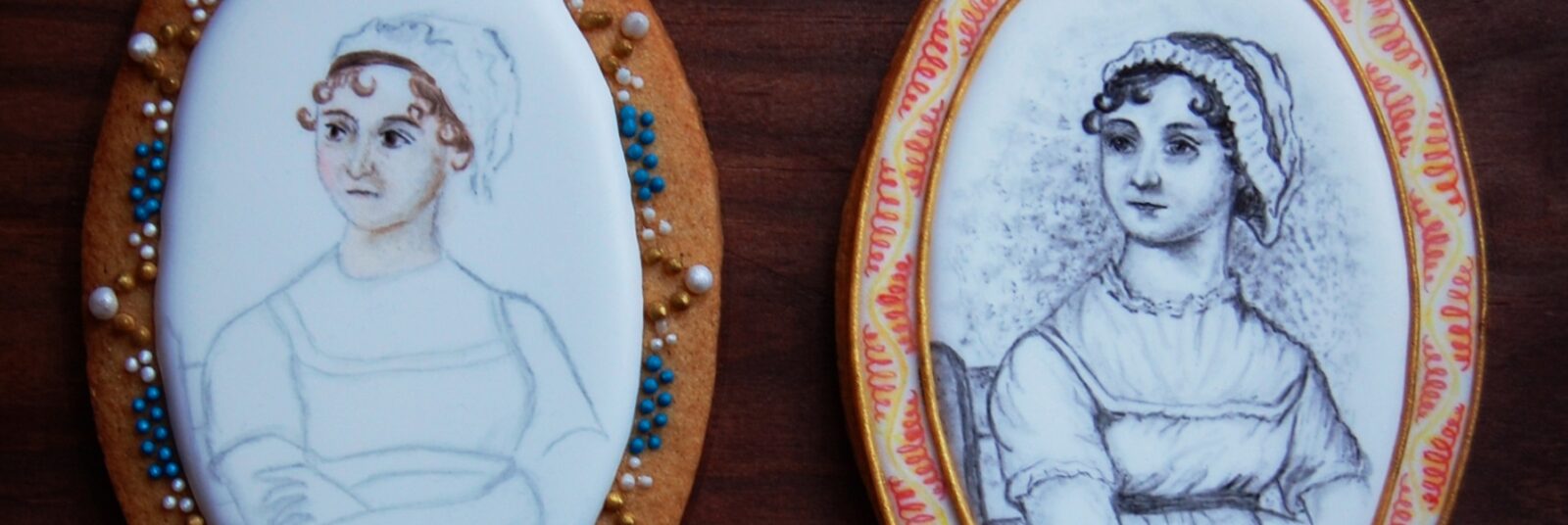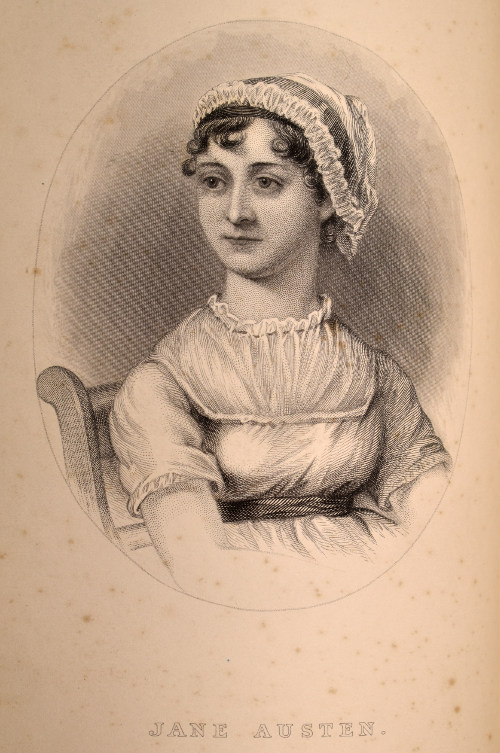Painting and poetry: October
This month, our Creatives in Residence Ella and Zahra have created beautiful (and delicious!) new works inspired by Jane Austen's portrait and by Mrs Bennet's husband-hunting mania in Pride & Prejudice.Ella kick-started her residency by creating two biscuit artworks, portraying two versions of Jane Austen’s likeness…
Ella: Before encountering the Jane Austen’s House collection, I thought I knew what Jane Austen looked like. Her likeness is printed on the British £10 note, for example, and I was familiar with the portrait featuring in A Memoir of Jane Austen, published in 1869. I was surprised to learn that both these images were created after Jane had died. There is only one authenticated portrait of the author, showing her face, that was produced during her lifetime – an unfinished watercolour sketch by Cassandra Austen, Jane’s elder sister.
Jane’s appearance varies dramatically between these portraits. In Cassandra’s sketch, her arms are folded and she looks curtly to one side. The engraved portrait published in 1869 (and the modern £10 note portrait) give the author a far more serene, naïve expression and unfolded arms.
This month, I created two biscuits to capture the differences between Cassandra’s watercolour sketch and the portraits that have been created since Jane Austen died. The turquoise, gold, and pearl frame on the Cassandra-inspired biscuit (left) is based on the design of a bracelet in the Jane Austen’s House collection, which is believed to have belonged to Jane. I used a pattern featuring on the £10 note as inspiration for the frame surrounding the beautified biscuit portrait (right).
The biscuit flavour is orange, cardamom and vanilla, and the portraits were painted onto a royal icing base by hand using food colouring gels and vodka.
For her October work, Zahra crafted a poem inspired by Mrs Bennet in Pride & Prejudice, and the relentless mission of Georgian families to marry off their daughters that Zahra also recognised from her own life. We think ‘Hourglass’ also captures something of Jane Austen’s dry wit, and we love the use of tangible objects that also links it back to the Museum collection.
Hourglass
The midnight you turn twenty-one,
your name flashes red in an aunty’s notebook.
‘Happy birthday’ swapped out
for the smug grin of ‘you’re next’.
Mothers whisper behind closed doors,
litany of phone calls not too far
from the ones you had as a teenager –
codenames for boys she’s convinced
are the best match. Aunties don
their flower girl/ event planner/
designer caps, light the stage
in their minds. Your world,
a cottage of aunties. This circle of girls
turned women too fast.
Your mother’s recipe book,
her grandmother’s veil,
a gold pendant – all ready
to be dusted and handed over.
You, twenty-one and dawdling
through life.
You wear your mother’s eyes
and her stubbornness,
but you wear it all wrong.
Zahra: Re-reading Pride & Prejudice in my early twenties was a revelation. I am struck by Mrs Bennet and all the real-life Mrs Bennets I know, whose ‘business of her life was to get her daughters married’. This poem is an effort to re-imagine Elizabeth’s feelings through the length of the novel, with references from my own life or lives of friends.
The title is a nod to this idea of running out of time when it comes to getting married but also the false ideals your mother or her mothers have held on.
~
Check back next month to see Ella and Zahra’s next works!


